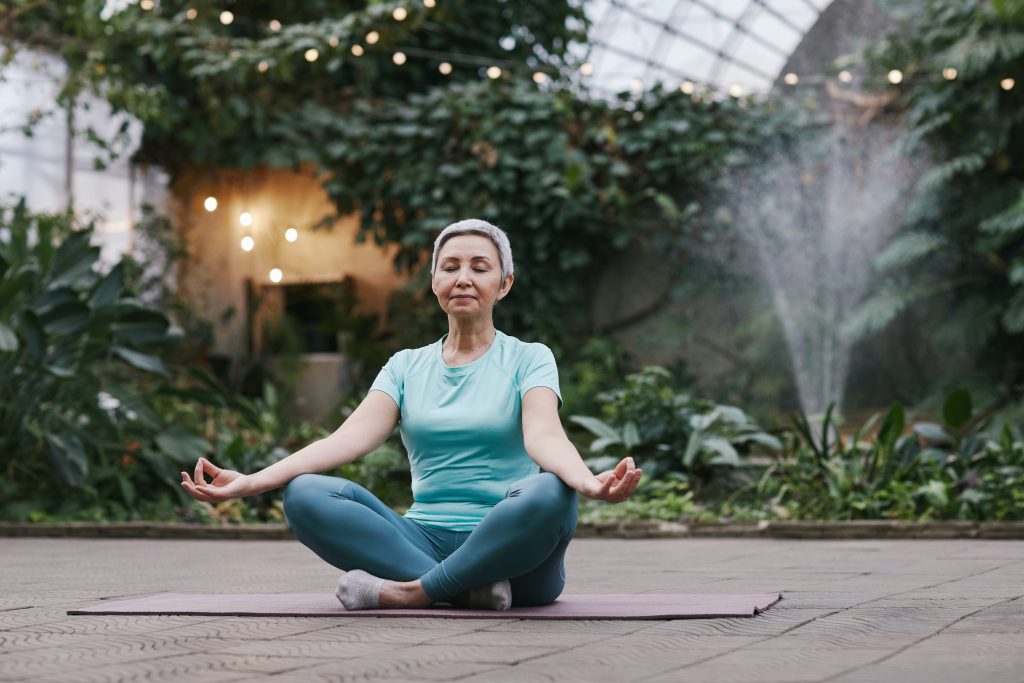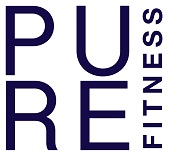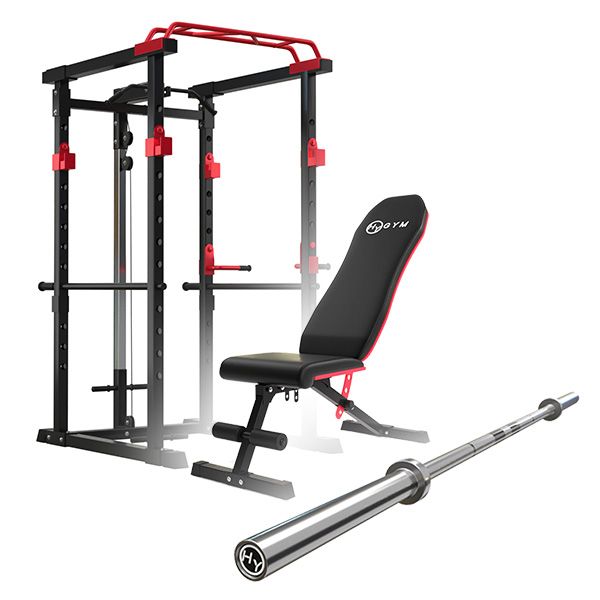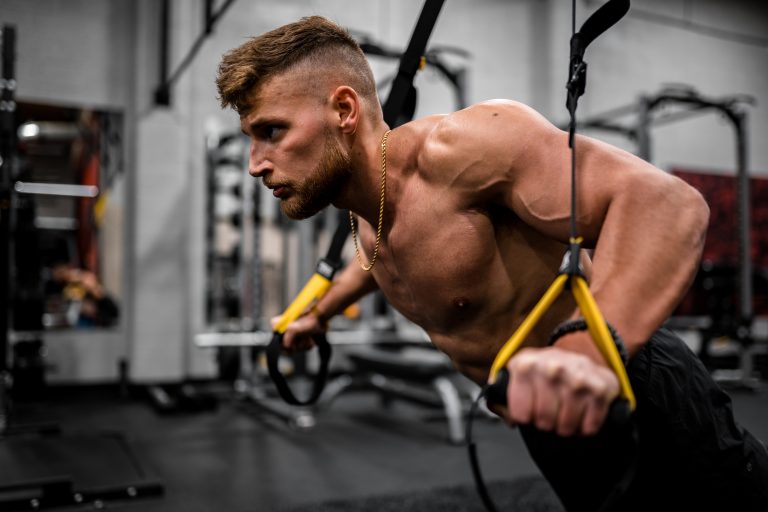Flexibility is an essential aspect of overall fitness that allows you to move freely and with ease. Whether you’re an athlete or someone looking to enhance your daily activities, knowing how to improve flexibility through stretching can be a game-changer. By incorporating simple stretches into your regular routine, you can regain lost mobility, prevent injuries, and experience a newfound sense of freedom in your movements. So, let’s explore the wonders of stretching and discover the key techniques that can help you become more flexible. Get ready to unlock the full potential of your body!

Table of Contents
ToggleUnderstanding Flexibility
Flexibility refers to the ability of your joints and muscles to move through their full range of motion without any discomfort or limitations. It is an important aspect of overall fitness and plays a crucial role in maintaining good health. Understanding flexibility and its significance can help you incorporate effective stretching routines into your daily life.
Definition of flexibility
Flexibility can be defined as the ability of the body to bend, twist, and stretch easily without any resistance or strain. It involves the elasticity of muscles, tendons, and ligaments, which allows for a wide range of motion in all directions. When you have good flexibility, you can perform various movements and activities with ease.
Importance of flexibility
Having good flexibility offers numerous benefits for your overall health and well-being. It not only enhances your physical performance but also reduces the risk of injuries, improves posture and alignment, and promotes a sense of relaxation and comfort in your body. Incorporating flexibility training into your routine can significantly enhance your overall quality of life.
Factors affecting flexibility
Several factors can influence an individual’s flexibility. These include age, genetics, physical activity levels, and previous injuries. As we age, our muscles naturally lose elasticity, making flexibility training even more important to maintain joint mobility and prevent stiffness. Additionally, some people may naturally have greater flexibility due to their genetic makeup, while others may have to work harder to achieve similar results.
Types of flexibility
Flexibility can be categorized into various types based on the specific muscle groups and movements involved. The main types of flexibility include dynamic, static, ballistic, active, passive, and proprioceptive neuromuscular facilitation (PNF) stretching. Each type targets specific muscles and joints, allowing for different degrees of flexibility and range of motion.
Benefits of Improving Flexibility
Improving flexibility offers a wide range of benefits that positively impact various areas of your life. By devoting time and effort to stretching routines, you can experience the following advantages:
Enhanced range of motion
Increased flexibility leads to an enhanced range of motion in your joints. This allows you to move freely and perform everyday activities more efficiently. Moreover, it facilitates better performance in sports, dance, and other physical activities that require a wide range of movements.
Improved athletic performance
Flexibility plays a crucial role in athletic performance. When your muscles and joints can move through their full range of motion, you can achieve optimal power, speed, and agility. Flexibility training can help athletes excel in their respective sports by improving their ability to perform explosive movements and preventing injuries.
Reduced risk of injuries
Flexible muscles and tendons are less prone to strains, sprains, and other injuries. By improving flexibility, you can reduce the risk of muscle imbalances, joint instability, and overuse injuries. This is particularly important for individuals who engage in regular physical activities or participate in high-impact sports.
Better posture and alignment
Good flexibility promotes proper posture and alignment. It helps lengthen tight muscles and release tension that may be causing poor posture. By improving your flexibility in areas like the back, hips, and shoulders, you can alleviate muscular imbalances and maintain a more upright and balanced posture in your daily life.
Types of Stretches
Stretching exercises are the key to improving flexibility. There are several types of stretches, each with its own specific benefits and techniques. Incorporating a variety of stretches into your routine can help target different muscle groups and enhance overall flexibility.
Static stretching
Static stretching involves holding a stretch for a prolonged period, typically around 30 seconds. It helps lengthen and relax the muscles, improving flexibility and range of motion. Static stretches are commonly performed after a workout or during a cool-down routine.
Dynamic stretching
Dynamic stretching involves active movements that mimic the motions used in a particular activity or sport. It helps warm up the muscles, increase blood flow, and prepare the body for physical exertion. Dynamic stretches often involve gentle bouncing or swinging motions to gently stretch the muscles.
Ballistic stretching
Ballistic stretching involves rapid and bouncing movements to stretch the muscles. It is a more advanced form of stretching that should be performed with caution to avoid injury. Ballistic stretches are commonly used by athletes and dancers to improve dynamic flexibility.
Active stretching
Active stretching requires the use of opposing muscle groups to stretch a particular muscle. This type of stretching helps develop strength and flexibility simultaneously by actively engaging the muscles being stretched.
Passive stretching
Passive stretching involves using an external force, such as a partner, gravity, or equipment, to achieve a stretch. This type of stretching allows for a deeper stretch as the external force assists in moving the body beyond its normal range of motion.
PNF stretching
Proprioceptive Neuromuscular Facilitation (PNF) stretching combines passive stretching with isometric contractions. It involves stretching a muscle, then contracting it against resistance before relaxing and stretching it again. PNF stretching is commonly used in rehabilitation settings to improve flexibility and restore function to injured muscles.
Developing a Stretching Routine
To improve flexibility effectively, it is important to develop a stretching routine that suits your specific needs and goals. Here are some key steps to consider when creating your routine:
Setting goals
Start by setting clear goals for your flexibility training. Determine the specific areas of your body that you want to improve and the level of flexibility you aim to achieve. Setting realistic and achievable goals will help you stay motivated and track your progress.
Creating a warm-up routine
Before starting any stretching exercises, it is essential to warm up your muscles to increase blood flow and prepare them for stretching. Incorporate light aerobic activities such as jogging or jumping jacks, followed by dynamic stretches that mimic the movements of the activity you will be performing.
Choosing appropriate stretches
Select stretches that target the specific muscle groups you want to improve. Consider incorporating a combination of static, dynamic, and PNF stretches to work on different aspects of flexibility. It is essential to perform stretches correctly and avoid pushing yourself too hard to prevent injury.
Implementing a cool-down routine
After completing your workout or physical activity, take time to cool down your body to gradually reduce your heart rate and relax your muscles. Perform static stretches to help alleviate any tension built up during exercise and promote overall flexibility.
Frequency and duration of stretching
To see significant improvements in flexibility, consistency is key. Aim to stretch at least three to five times per week, dedicating around 10 to 15 minutes to each stretching session. Gradually increase the duration and intensity of your stretches as your flexibility improves over time.
Safety Tips for Stretching
While stretching can provide numerous benefits, it is important to keep some safety tips in mind to prevent injuries and maximize your results.
Avoiding bouncing or jerking movements
When performing stretches, avoid bouncing or jerking movements, as they can strain your muscles and lead to injury. Instead, focus on slow and controlled movements to gradually lengthen your muscles and promote flexibility.
Listening to your body
Pay attention to your body and avoid pushing yourself beyond your limits. Stretch to a point of mild discomfort but never to the point of pain. Each person’s flexibility level is different, so it is crucial to listen to your body and respect its limitations.
Avoiding overstretching
While it is important to challenge your body and gradually increase your flexibility, overstretching can lead to muscle strains and injuries. Be mindful of your body’s response and avoid pushing yourself too hard. Progress gradually and allow your muscles to adapt and develop over time.
Gradually increasing intensity
As your flexibility improves, gradually increase the intensity of your stretches. This can include increasing the duration of each stretch, trying more advanced stretching techniques, or incorporating additional exercises into your routine. However, always do so gradually and with proper technique to avoid undue stress on your muscles.
Seeking professional guidance
If you are new to stretching or have specific concerns or injuries, it is advisable to seek professional guidance. A qualified personal trainer, physiotherapist, or sports coach can provide expert advice, assess your individual needs, and develop a stretching routine tailored to your goals and limitations.
Effective Stretches for Flexibility
Incorporating a variety of stretches into your routine can target different muscle groups and enhance overall flexibility. Here are some effective stretches to consider for various areas of your body:
Neck stretches
Neck stretches can help alleviate tension and improve flexibility in the neck and shoulders. These stretches can include gentle neck rotations, tilting the head from side to side, and stretching the neck muscles by bringing your ear towards your shoulder.
Shoulder and chest stretches
Shoulder and chest stretches help relieve tightness and improve mobility in these areas. Exercises like shoulder rolls, chest openers, and doorway stretches can effectively target these muscle groups.
Arm and wrist stretches
Stretching the arms and wrists is essential for maintaining flexibility and preventing discomfort in these areas. Exercises such as tricep stretches, wrist circles, and finger stretches can help improve flexibility and reduce the risk of overuse injuries.
Back stretches
Back stretches can help relieve tension and improve spinal mobility. Cat-cow stretches, child’s pose, and seated spinal twists can all effectively target the muscles of the back and promote flexibility.
Hip and glute stretches
Stretching the hips and glutes is important for maintaining lower body flexibility. Exercises like hip flexor stretches, piriformis stretches, and pigeon pose can help release tension and improve range of motion in these areas.
Leg and calf stretches
Flexibility in the legs and calves is crucial for mobility and preventing injuries. Stretches like the standing quad stretch, hamstring stretches, and calf raises can help improve flexibility and support proper lower body function.
Incorporating Stretching into Exercise
Stretching should be an integral part of your exercise routine to maximize the benefits of both activities. Here’s how you can incorporate stretching into your exercise regimen:
Pre-workout stretching
Prior to starting your workout, perform dynamic stretches that mimic the movements you will be doing. This will help warm up your muscles, increase blood flow, and prepare your body for physical activity. Dynamic stretches can include leg swings, arm circles, and torso twists.
Post-workout stretching
After completing your workout, engage in a cool-down routine that incorporates static stretches. This will help prevent muscle stiffness and promote flexibility. Focus on stretching the muscle groups you used during your exercise session, holding each stretch for around 30 seconds.
Stretching before specific activities
If you engage in activities that require specific movements or muscle groups, perform targeted stretches before starting. For example, if you are planning to go for a run, focus on stretching the leg muscles and hips to prepare your body for the activity.
Tools and Equipment for Stretching
While stretching can be done with just your body, certain tools and equipment can enhance your stretching routine and target specific muscle groups. Here are some commonly used tools and equipment for stretching:
Yoga strap
A yoga strap is a long, adjustable strap that can be used to assist in stretching various muscle groups. It allows you to extend your reach and achieve deeper stretches, particularly in areas that are difficult to target on your own, such as the shoulders and hamstrings.
Resistance bands
Resistance bands are versatile tools that can be used to add resistance and provide assistance during stretching exercises. They come in various levels of resistance, allowing you to gradually increase the intensity of your stretches and target different muscle groups.
Foam rollers
Foam rollers are cylindrical devices made of dense foam that can be used for self-myofascial release, also known as self-massage. By rolling different areas of your body over the foam roller, you can release muscle tension and improve flexibility.
Balance balls
Balance balls, also known as stability balls, can be used to add an element of instability to your stretches. By sitting or lying on a balance ball, you engage your core muscles and challenge your balance, helping to improve stability and flexibility.
Alternative Approaches to Flexibility
While stretching is the most common approach to improving flexibility, there are alternative practices that can also provide significant benefits. These practices often combine stretching with other elements, such as body awareness, breathing techniques, and mindfulness.
Yoga
Yoga is a holistic practice that combines stretching, strength building, and relaxation techniques. It focuses on connecting the mind, body, and breath, promoting flexibility, balance, and overall well-being. Regular yoga practice can improve flexibility, reduce stress, and enhance body awareness.
Pilates
Pilates is a low-impact exercise system that focuses on core strength, flexibility, and body alignment. It incorporates controlled movements and emphasizes correct form and breathing. Pilates exercises target the deep stabilizing muscles, promoting flexibility, balance, and overall body strength.
Tai Chi
Tai Chi is a traditional Chinese martial art that combines slow and flowing movements with deep breathing and mental focus. It promotes balance, flexibility, and relaxation. The gentle, continuous movements of Tai Chi can help improve overall body flexibility and coordination.
Dance
Dance, whether it be ballet, contemporary, or any other style, promotes flexibility through its expressive movements and choreography. Regular dance practice can enhance overall body flexibility, improve posture, and increase muscle strength.
Measuring and Tracking Flexibility Progress
Keeping track of your flexibility progress can provide motivation and help you gauge the effectiveness of your stretching routine. Here are some ways to measure and track your flexibility:
Range of motion tests
One way to measure your flexibility is through range of motion tests. These involve specific movements that assess the degree of motion in a joint or muscle group. By regularly repeating these tests, you can monitor improvements and identify areas that require further attention.
Flexibility assessment tools
There are various tools available to assess flexibility, such as goniometers and inclinometers. These instruments measure joint angles and provide precise measurements of range of motion. They are commonly used in clinical settings to track changes in flexibility over time.
Keeping a flexibility journal
Maintaining a flexibility journal is a simple yet effective way to track your progress. Record the stretches you perform, the duration of each stretch, and any changes or improvements you notice. This will help you stay consistent and motivated as you see your flexibility increase over time.
By understanding the different types of flexibility, the benefits of improving flexibility, and the various approaches to stretching, you can create a comprehensive stretching routine that suits your needs and goals. Remember to listen to your body, stay consistent, and seek professional guidance when needed. With dedication and regular practice, you can enhance your flexibility, improve your overall fitness, and enjoy a more comfortable and active lifestyle.








